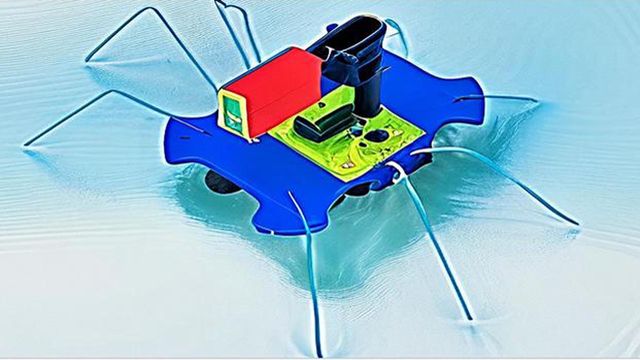Register for free to listen to this article
Thank you! Listen to this article using the player above. ✖
Want to listen to this article for free?
To unlock access to all audio articles, fill out the form below.
Futurists predict that by 2035, more than one trillion autonomous nodes will be integrated into every human activity as part of the “Internet of Things.” In the near future, nearly every object, big or small, will transmit information to a central database without the need for human intervention.
Complicating this idea is that 71% of the Earth’s surface is covered by water, and aquatic environments pose significant environmental and logistical challenges. To take these challenges into account, the US Defense Advanced Research Projects Agency (DARPA) has launched a program called Ocean of Things.
Binghamton University Professor Seokheun “Sean” Choi, Dr. Anwar Elhadad (Class of 2024), and doctoral student Yang “Lexi” Gao have developed a self-propelled “bug” that can glide across the water’s surface in the hopes of revolutionizing underwater robotics.
Want more breaking news?
Subscribe to Technology Networks’ daily newsletter to get the latest science news delivered straight to your inbox every day.
Subscribe for free
Choi, a faculty member in the Department of Electrical and Computer Engineering in the Thomas J. Watson School of Engineering and Applied Science and director of the Center for Advanced Sensing Technologies and Environmental Sustainability Studies (CREATES), has been working for the past decade with funding from the Office of Naval Research to develop a bacterial-powered biobattery with a potential shelf life of 100 years.
The new underwater robot uses a similar technology because it is more reliable under adverse conditions than solar, kinetic or thermal energy systems. The Janus interface, which is hydrophilic on one side and hydrophobic on the other, captures nutrients from the water and retains them within the device to promote the production of bacterial spores.
“When the environment is favorable for the bacteria, they become vegetative cells and generate power,” he says, “but when conditions are unfavorable, for example when it’s very cold or nutrients are not available, the bacteria revert to spores. In this way, they can extend their operational life.”
The Binghamton team’s work has demonstrated the ability to generate close to 1 milliwatt of power — enough to power the robot’s mechanical movements and sensors that can track environmental data such as water temperature, pollution levels, the movements of commercial ships and aircraft, and the behavior of aquatic animals.
Being able to send robots out where they are needed is a clear upgrade from current “smart floats,” which are fixed sensors anchored in one place.
The next step in improving these underwater robots will be to test which bacteria are best at producing energy under stressful ocean conditions.
“We used a fairly common bacterial cell, but we need to do more research to know what is actually living in that area,” Choi said. “Previously we’ve demonstrated that combining multiple bacterial cells can improve sustainability and power. This is another idea. With machine learning, we may be able to find the best combination of bacterial species to improve power density and sustainability.”
Reference: Elhadad A, Gao Y, Choi S. Innovative aquatic robots: advanced biomimetic strategies for self-propelled locomotion across the water surface. Adv Mat Technol. 2024:2400426. doi: 10.1002/admt.202400426
This article has been republished from the following source. Note: Sources may have been edited for length and content. Please contact the source for more information. Our press release publication policy can be found here.

